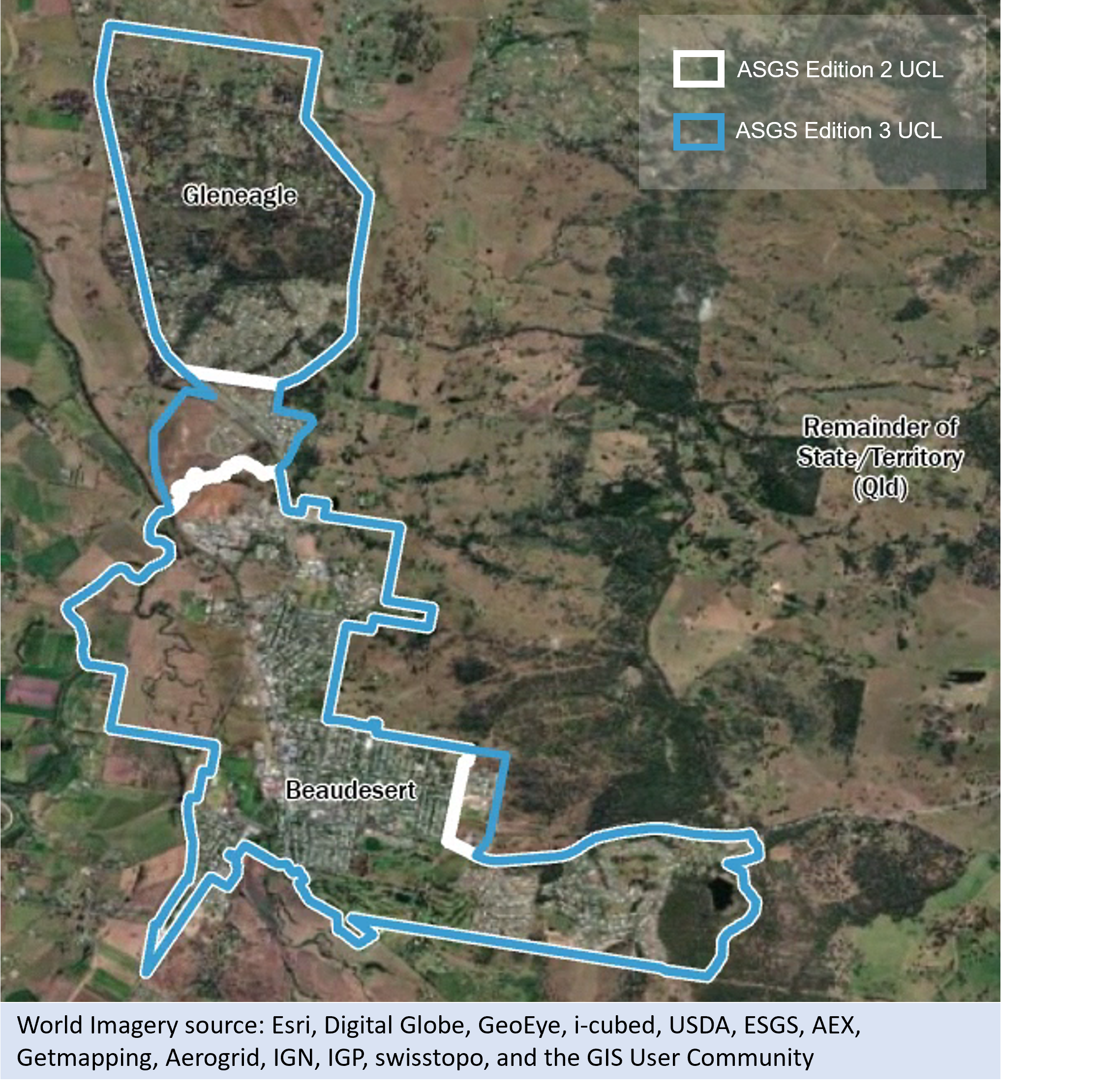Urban Centre criteria
Adjacent urban SA1s are combined to form Urban Centres if they meet the following requirements:
- The aggregated population of urban SA1s is 1,000 persons or more
- The combined urban SA1s have an urban identity, meaning shared urban facilities of some kind and an identifiable name
Discrete Aboriginal and Torres Strait Islander communities and discrete tourist resorts with a population exceeding 1,000 are considered to be Urban Centres regardless of density.
A military base or prison cannot be an Urban Centre in its own right.
State or territory borders, Local Government Areas (LGA) and other administrative boundaries are not considered in determining whether an SA1 should be included within the Urban Centre.
Non-urban SA1s may be included in an Urban Centre for three reasons.
- An SA1 is completely surrounded by urban SA1s belonging to the same Urban Centre. This includes areas that are bounded by an Urban Centre and a shore or coastline.
- An SA1 is acting as a bridge between an Urban Centre and a nearby urban SA1 that is within 500 metres road distance and could reasonably be regarded as part of that Urban Centre.
- An SA1 is on the edge of an Urban Centre and contains high density development, or urban infrastructure as well as rural land.
In each of these cases, discretion is applied when factoring in the overall design of the Urban Centre, especially the effect the inclusion of the non-urban SA1 will have on the overall population density of that Urban Centre. In rare instances, discretion may also be applied to other Urban Centre criteria to maintain stability over time.
Both SA1s and Mesh Blocks are designed to reflect the edge of urban areas. However, there are some cases where the other design criteria for these areas, such as population size or alignment to gazetted Suburb and Locality boundaries, may compromise this. As a result some SA1s may contain urban settlement or infrastructure but not meet the urban SA1 criteria.
Urban Centres with a population of 20,000 people or more are combined with any other Urban Centre within 3km. This distance is calculated along sealed roads between the edge of the closest urban Mesh Blocks, or adjoining urban infrastructure and land use, within each Urban Centre. SA1s containing the shortest road route between the two clusters are also included to bridge them together, unless they severely compromise Urban Centre design. Ferry and rail links are not considered.
Adjacent Urban Centres are not combined and are considered separate if:
- they are separated by an un-bridged geographical barrier, such as a river, escarpment, inlet, lake or swamp
- the Urban Centres represent separate labour markets (defined as: a single GCCSA or the combined SA4s of Newcastle and Lake Macquarie and Hunter Valley exc Newcastle, as these represent a single labour market)








